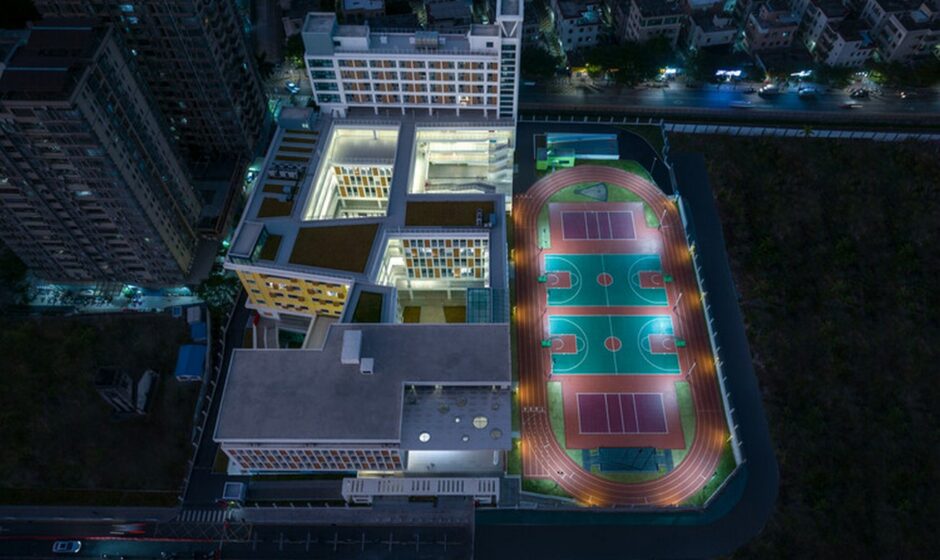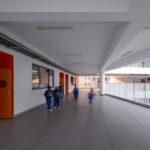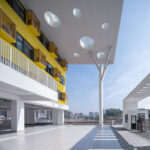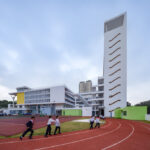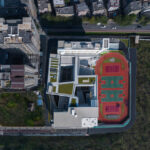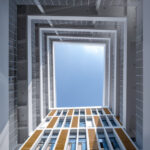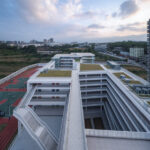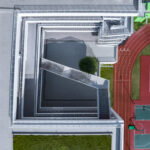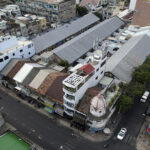In a bustling metropolis like Shenzhen, where urbanization burgeons at an unprecedented rate, the demand for educational infrastructure escalates proportionally. Faced with a surging population that reached 17.56 million in 2021, the city encounters a dire shortage of educational facilities, particularly in primary and secondary schools. The statistics are staggering; in 2020 alone, the gap in elementary and junior high school placements amounted to 49,500 and 10,600, respectively. This scarcity intertwines with the conundrum of diminishing land availability for school construction, sparking a poignant dilemma in urban planning.
Addressing Urbanization Challenges
The architectural response to this pressing issue manifests in the innovative design of Fucheng Experimental School, nestled within the Longhua District of Shenzhen. Spearheaded by The Institute of Architectural Design & Research at ShenZhen University, in collaboration with Z&Z Studio, this educational institution epitomizes a paradigm shift in school architecture, redefining spatial utilization and pedagogical paradigms.
Conceptual Framework: Blending Tradition with Innovation
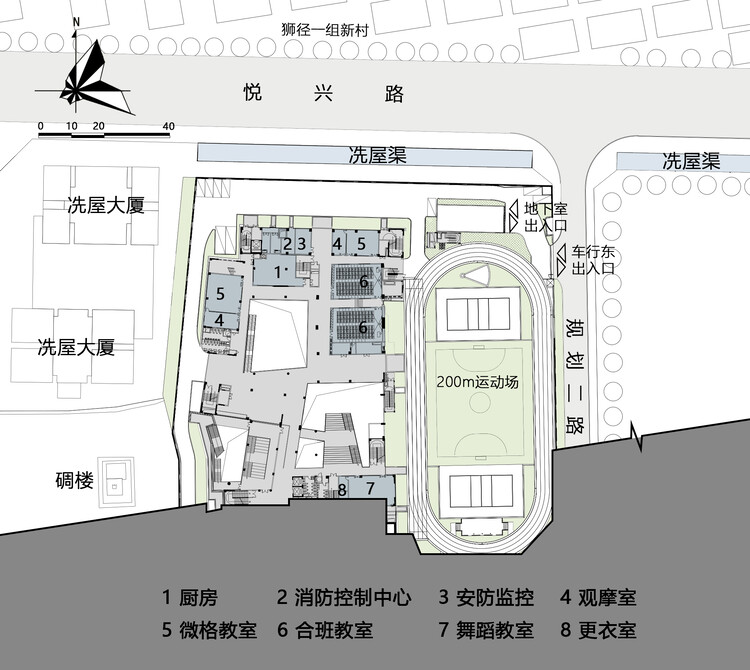
- Legacy of Learning Spaces
Drawing inspiration from both traditional Chinese educational philosophy and modern architectural principles, Fucheng Experimental School embodies a harmonious blend of the past and present. Echoing Confucius’s fabled teachings under the Apricot Altar and Louis Kahn’s musings on the essence of education, the design integrates the symbolism of the “big tree” and the serenity of courtyards. These elements evoke the ambiance of ancient academies like the famed Yuelu Academy, fostering a conducive environment for intellectual growth and contemplation.
- Future-Oriented Resource Sharing
Embracing a forward-thinking approach to educational infrastructure, the school adopts a model of “resource sharing” to optimize space utilization and foster interdisciplinary collaboration. The campus layout features distinct zones, including the “Academic Center” for specialized learning, the “Teaching Center” for general education, and the “Living Center” for faculty accommodation. This tiered arrangement, coupled with elevated platforms and interconnected facilities, facilitates seamless interaction and knowledge exchange across disciplines.
- Community-Centric Design
Beyond its role as a mere educational institution, Fucheng Experimental School aspires to become a vibrant hub of community engagement and social interaction. By strategically integrating cultural and sports facilities at subterranean levels, the school opens its doors to the wider community, offering recreational amenities and promoting social cohesion. Furthermore, the design prioritizes accessibility and inclusivity, with thoughtfully planned courtyards and activity spaces that invite spontaneous gatherings and collaborative ventures.
Architectural Innovation: Melding Form and Function

- Harmonizing with Nature
Embracing the subtropical climate of the region, the architectural design incorporates elements of traditional Lingnan style, characterized by open corridors, elevated platforms, and expansive eaves. These features provide ample shade and shelter from the sun and rain, enhancing the comfort and well-being of students and staff. Moreover, the pallid color palette and playful architectural accents infuse the campus with a youthful and dynamic ambiance, reflective of its educational ethos.
- Maximizing Spatial Dynamics
Central to the design philosophy of Fucheng Experimental School is the notion of dynamic spatial utilization, exemplified by its intricate network of courtyards, staircases, and terraces. These interstitial spaces not only facilitate circulation but also serve as multifunctional hubs for learning, recreation, and socialization. By blurring the boundaries between indoor and outdoor environments, the architecture engenders a sense of exploration and discovery, nurturing holistic development among students.
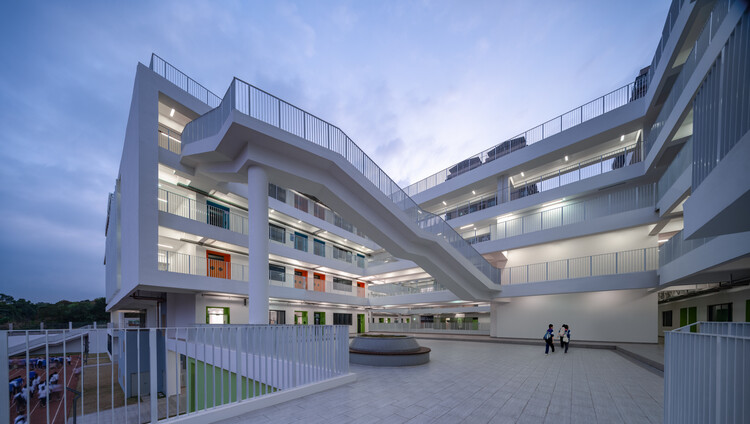
- Sustainability and Resilience
In line with contemporary principles of sustainable design, the school incorporates eco-friendly features such as natural ventilation, daylight harvesting, and rainwater harvesting systems. These initiatives not only reduce environmental impact but also instill ecological consciousness among students, fostering a culture of sustainability from an early age. Moreover, the resilient infrastructure ensures adaptability to future challenges, safeguarding the continuity of education amidst evolving urban dynamics.
Conclusion
Fucheng Experimental School stands as a testament to the transformative power of architecture in shaping educational landscapes and fostering social progress. By embracing tradition, innovation, and community-centric values, this visionary institution redefines the contours of school architecture, inspiring a new generation of learners and educators to realize their full potential in an ever-changing world.

